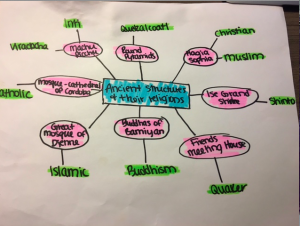Defining Engineering
To me, the definition of an engineer is someone who builds or design structures or machines. This definition fits many of the topics we have covered in this class: sacred structures like the Hagia Sophia, the Mosque-Cathedral of Cordoba, or the Great Mosque of Djenne. Engineers also designed ancient water structures. Most of the things we have covered in this class fall into the category of civil engineering. They design cars, houses, buildings, roads, dams, bridges; the list goes on.
Although my definition of engineers is close to the literal definition, I think that you can engineer things that are not material like buildings or bridges or roads. I think people can be engineers of ideas, and how we construct these ideas and put them to action falls on constructing or building them. This is how we have “engineered the past”. There were some pretty amazing structures built in the past, but people have also engineered concepts, such a political systems or education.
Concept Map
In my concept map, I decided to look at the different religions practiced at the sacred structures we went over in class. I have read about each religion, but had not compared them all. In the case of ancient religions such as the Aztec and Incans, they practiced concepts more than particular religions; they worshipped many gods, believed in human sacrifice, and their sacred structures were built to recognize particular gods. Hagia Sophia was a Christian and Muslim place of worship at different times, and served the dual purpose of a cultural center. People at Ise Grand Shrine practice Shinto, and it is an extremely sacred structure. The Friends Meeting houses were “sacred” structures of the Quakers. Unlike the other grand structures, Quaker houses were very plain and simple. The Buddhas of Bamiyan statues held importance for people of the Buddhist religion, and were almost completely destroyed. The Great Mosque of Djenne is an Islamic center, and also serves as an important cultural center. Finally, the Mosque- Cathedral of Cordoba is a site of Catholic religion. In my comparison, I found that the majority of religious structures were very elaborate buildings. They exhibit some of the greatest architecture of the civilizations of the time, and many stand to this day because of it. Many of the structures also served as great community centers and places of learning aside from their religious purpose.
